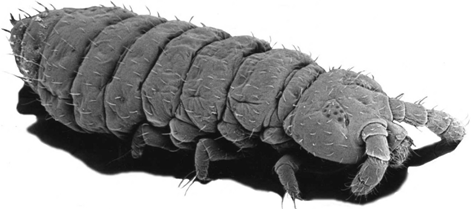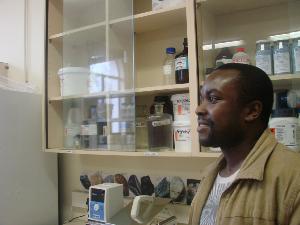Casper
Nyamukondiwa attained his BSc Agriculture (Hons) degree in 2004 from the University of Zimbabwe. He then worked for the Plant
Protection Research Institute (PPRI) of Zimbabwe for 2 years as a Research
Officer (Entomology) before he left to further his studies. He then started his
MSc Agriculture in Entomology in January 2007 at Stellenbosch University, South
Africa which he completed in December 2008. He is currently studying for a PhD
Agriculture (Entomology) degree at Stellenbosch University. His research interests are in the Integrated
Pest Management (IPM) of economic agricultural pests and is working on the
thermotolerance of fruit flies (Ceratitis
rosa and Ceratitis capitata)
(Diptera: Tephritidae): implications for geographic distribution, overwintering
physiology and pest management. The Mediterranean
fruit fly (Medfly) Ceratitis capitata
(Wiedemann) and the Natal fruit fly Ceratitis
rosa Karsch are deleterious fruit pests that hinder the economic production
of deciduous and citrus crops in South Africa. Both species are multivoltine
international quarantine pests that are highly polyphagous, invasive and widely
distributed in Africa. However, current work aimed at predicting potential Ceratitis rosa and capitata
distribution in the Western Cape region, South Africa requires thermotolerance
data in order to predict the geographic distribution of these flies. Survival
of extreme temperatures is also a critical aspect of population dynamics for
both species. This project aims to investigate several aspects of C. rosa and C. capitata thermal biology. First, geographic variation of
thermotolerance, indicative of local climatic adaptation, among fruit fly
populations is currently unknown. Second, overwintering strategy (i.e. where
and how flies survive during the winter), is currently unknown for local fruit
fly populations and is an important source of reinfestation for Ceratitis species each spring. Third,
factors influencing temperature tolerance within C. capitata and C. rosa populations
(e.g. age, gender, feeding/reproductive status) have not been well
investigated. Furthermore, it is also significant to consider how the thermal
environment affects survival and how it might limit the behavioral activity of Ceratitis species. Few studies have
considered the physiological responses to temperature treatment (i.e.
phenotypic plasticity) of Ceratitis
species. Phenotypic plasticity is a major mechanism used by arthropods to cope
with temperature fluctuations both daily and seasonally and also upon introduction
to novel environments. Finally, the success of the Sterile Insect Technique
(SIT) programs in the control of fruit flies may be improved by
pre-conditioning laboratory-reared flies prior to release in the wild to
enhance field thermotolerance, performance and survival. Consequently, this
project aims to explore 1) how temperature might influence the population
dynamics through mortality, and hence, overwintering physiology and geographic
distribution of C. rosa and C. capitata and 2) how fly thermotolerance
might be manipulated for the successful control of these species. He
is currently on a research visit at the University of Western Ontario and is
working on phenotypic plasticity of thermal tolerance in several fruit flies
species.




